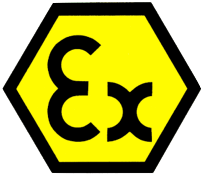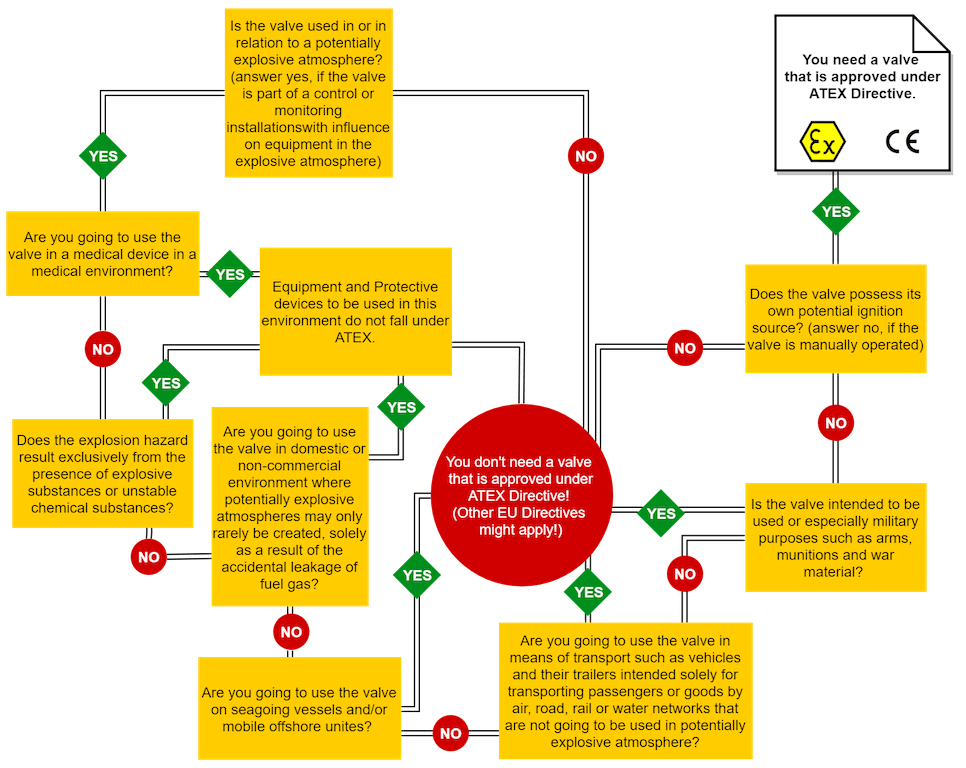What equipment must comply with ATEX?

Figure 1: ATEX certification symbol
Valves and actuators that are subject to the ATEX Directive 2014/34/EU can be classified as equipment, components, safety devices, controlling devices, or control units. A valve under this ATEX Directive includes:
- Valve body: this generally does not have its own source of ignition, however, users should always consider electrostatic ignition risks.
- Valve accessories (e.g. coupling, adapter): these fall under components and generally do not have their own source of ignition. However, all ignition sources must be taken into consideration.
-
Actuator:
- Mechanical actuator (e.g. pneumatic, manually operated, transmissions): this falls under non-electrical equipment, for which all ignition sources such as mechanically produced sparks, hot surfaces and electrical discharges must be taken into consideration during the risk assessment.
- Electrical actuator (e.g. solenoid, positioners): this falls under electrical equipment, for which all ignition sources such as mechanically/electrically produced sparks, hot surfaces and electrostatic discharges must be taken into consideration during risk assessment.
As an example, a manually operated valve does not require ATEX certification, while a solenoid valve or an electro-pneumatic valve which consists of the electrical actuator and the valve body must be ATEX-certified as a complete product.
Furthermore, non-electrical equipment which do have their own source of ignition, such as regulators, cylinders, etc. must be ATEX-certified. If an electrical equipment does not have its own source of ignition, such as a filter or a lubricator, it does not fall under this ATEX Directive.
To determine whether you will need an ATEX approved valve, the flow chart below can provide guidance. If you have any uncertainty, please contact our technical support for further information.

Flow chart to determine if you need a valve with ATEX approval - Produced by Tameson




